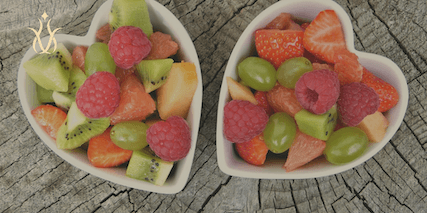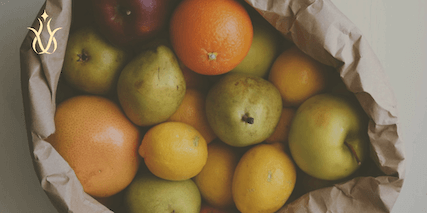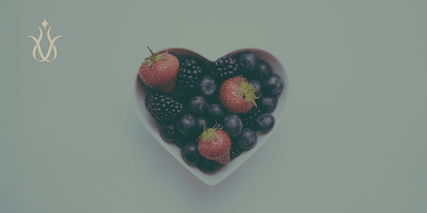Ever wonder how many calories are in your favourite fruits? Whether you’re dieting, trying to maintain your current weight, or simply curious about nutritional content, our guide makes ‘fruit calories’ clear and easy to understand. Find out which fruits align with your health goals, all presented in simple terms without the fluff.
Key Takeaways
-
Fruits have varying caloric contents, which are important to consider for dietary needs; for example, an apple contains approximately 95 calories, whereas a medium avocado has about 240 calories.
-
Beyond calories, fruits offer essential nutrients like vitamins, minerals, and fiber that aid in immune support, heart health, and digestive well-being, with different fruits providing specific health benefits.
-
Regular consumption of a variety of fruits can play a significant role in weight management due to their ability to enhance satiety, coupled with their lower caloric content compared to processed snacks, while also delivering essential nutrients.
Caloric Content of Popular Fruits

Every fruit boasts its own caloric content, crucial for accommodating a variety of dietary needs. Here are some examples:
-
A medium apple provides approximately 95 calories
-
A medium-sized banana offers around 105 to 110 calories
-
A medium-sized kiwi contains a mere 42 calories
-
A navel orange provides 73 calories
As demonstrated, these plant-based foods, also known as plant foods, can be comfortably incorporated into your diet without exceeding your daily caloric intake.
Understanding Fruit Serving Sizes
Understanding the caloric intake of fruits starts by getting acquainted with their serving sizes. For instance, one serving of an apple equals a medium-sized apple. The caloric content of fruit is determined based on this standard serving size, as recommended by resources like FoodData Central.
This knowledge is instrumental in achieving a balanced diet and precisely monitoring your calorie intake.
Low-Calorie Options
For those on a low-calorie diet, fruits such as watermelon serve as a tasty and hydrating snack. With only 30 calories per serving and 91% water content, watermelon has a low caloric density. This, coupled with its minimal protein, fat, and fibre content, makes it a suitable addition to a balanced diet, highlighting fruit’s advantages as a low-calorie option.
High-Calorie Fruits
Conversely, certain fruits like avocados have a higher calorie count, primarily due to their fat content. A whole medium avocado contains 240 calories. But don’t be alarmed! The fats in avocados are primarily heart-friendly monounsaturated fats, which, along with carotenoids, potassium, and fibre, help reduce the risk of chronic diseases.
Therefore, high-calorie tropical fruits can also enhance a healthy diet with their essential nutrients.
| Fruit | Calories (per 100g) |
|---|---|
| Apple | 52 |
| Banana | 89 |
| Orange | 47 |
| Strawberry | 32 |
| Blueberry | 57 |
| Grapes | 69 |
| Mango | 60 |
| Pineapple | 50 |
| Watermelon | 30 |
| Kiwi | 61 |
Nutritional Breakdown of Fruits

Fruits offer more than just calories; they are brimming with essential nutrients that aid in achieving a balanced diet. For instance, an apple provides 1 gram of protein and no fat, while a medium-sized kiwi contains 0.1g of protein, 10.1g of carbohydrates, and less than 0.5g of fat. They’re also rich in various vitamins and minerals.
For example, watermelon provides vitamin C, potassium, and copper, while kiwis offer a good source of vitamin C, vitamin K, vitamin E, potassium, and folate. The consumption of a variety of fruits ensures an ample intake of different fibers, vitamins, and minerals necessary for a balanced diet.
Vitamins and Antioxidants
The vitamins and antioxidants found in fruits significantly support our immune system health and holistic well-being. Watermelon, for instance, is an excellent source of vitamin C, essential for immune system health. The vitamin C content in kiwis may also shorten the duration and intensity of cold symptoms.
Watermelon also provides vitamin B5 and vitamin A, derived from its beta carotene content, showcasing a range of antioxidants in fruit.
Fiber and Digestive Health
The fibre in fruits assists digestion and also fosters a sense of fullness, which can be particularly beneficial for those dealing with irritable bowel syndrome. A single medium apple, for example, provides 3 grams of dietary fibre, contributing to daily intake and aiding in digestion. This soluble dietary fibre can slow gastric emptying and extend satiety.
It’s also worth noting that the fibre content varies among different fruits. While a fruit like a watermelon contains fibre, its quantity is relatively low at just 0.4 grams per 100 grams.
Sugar and Glycemic Index
Despite containing natural sugars, fruits are also a source of fibre, vitamins, and minerals, positively impacting overall health. The glycemic index, a system that ranks foods on how much they raise blood glucose levels, is another important factor to consider.
For example, while watermelon has a high glycemic index, its actual impact on blood glucose is lessened due to its low carbohydrate content per typical serving. Compared to processed carbohydrates like bread or white flour, the natural sugars in fruits are accompanied by valuable nutrients, making fruits a healthier choice despite their sugar content. Additionally, fruits generally contain fewer fermentable short-chain carbohydrates than processed foods.
The Role of Fruit in Weight Management

Fruits can serve as a companion in your quest for weight management. They generally contain fewer calories than a serving of processed snacks, which can aid in healthier weight management and overall health. Moreover, consuming a diverse range of fruits provides necessary vitamins and minerals that contribute to weight management and general health.
Satiety and Snacking
Fruits have a substantial impact on enhancing satiety and reducing cravings. The fibre in fruits contributes to feelings of fullness by slowing digestion, which can help curb cravings and decrease the likelihood of snacking between meals.
Incorporating Fruits into Meals
Infusing meals with fruits not only improves nutritional value but also diversifies your diet. Fruits can be integrated into meals by adding them to cereals, salads, and as part of entrees.
Creating smoothies or using fruits as natural sweeteners in various dishes can enrich meals nutritionally without adding significant calories.
Balancing Fructose Intake
Despite the benefits of fruits, it’s crucial to regulate fructose intake. Fructose is a natural sugar found in fruit that, when consumed in excessive amounts, can contribute to health issues such as metabolic syndrome.
Managing the amounts and types of fruit consumed can help balance fructose intake within a diet, maintaining insulin sensitivity and avoiding metabolic complications.
Health Impacts of Fruit Consumption

The health advantages derived from fruit consumption are numerous. They’re high in vitamin and mineral content, making them advantageous for snacking over processed snacks that are typically higher in calories and less nutritious. Specific fruits also offer unique health advantages.
For example, kiwis contribute to personal health by offering valuable antioxidants and fibre.
Cardiovascular Disease Prevention
The nutrients and antioxidants present in fruits are pivotal in thwarting cardiovascular diseases. Incorporating fruits and vegetables as part of the daily diet can significantly reduce the risk of developing coronary heart disease and stroke. Potassium-rich fruits, for instance, are key in managing and lowering blood pressure, a major risk factor for heart disease.
Phytochemicals present in fruits, like plant sterols and flavonoids, can potentially offer a reduced risk of atherosclerosis.
Age-Related Macular Degeneration
Fruits rich in antioxidants can likewise mitigate the risk of age-related macular degeneration. Certain nutrients in fruits, like vitamin C, vitamin E, and carotenoids, are thought to contribute to this protective effect.
Dark leafy greens, while not fruits, are referenced for their high lutein and zeaxanthin content, elements which are also present in multiple fruits and beneficial for eye health.
Enhanced Heart Health
Fruits abundant in potassium, in conjunction with other beneficial nutrients, help to boost heart health. Watermelon, a source of potassium and copper, alongside citrulline and arginine involved in the production of nitric oxide, contribute to lower blood pressure and better heart function.
Fruits’ low fat and calorie content makes them a favourable choice for maintaining a healthy weight, an important factor for heart health.
Preparing and Enjoying Fruits

For optimal enjoyment of fruits, it’s essential to know how to pick ripe ones, store them to maintain freshness and weave them inventively into meals. This not only enhances their taste but also maximizes their nutritional benefits.
Selecting Ripe Fruits
Choosing ripe fruits guarantees you’re experiencing them at their pinnacle of taste and nutritional value. For instance, kiwis that are soft when pressed, have a fragrant smell and appear plump are indicators that the fruit is fully ripe.
Using a combination of touch, smell, and sight will guide you in choosing fruits that are at their peak for flavour and nutritional value.
Storing for Freshness
Correct storage of fruits aids in preserving their freshness and quality. For example, berries should be stored in the refrigerator with measures to control moisture.
Kiwis and other specific types of fruits can be kept fresh longer by placing them in plastic bags and storing them in the refrigerator.
Creative Ways to Eat More Fruit
Infusing your diet with more fruits can be an enjoyable and inventive endeavour. For a varied and nutritious breakfast, blend fruits into smoothies or use them as toppings for pancakes and waffles. Adding fresh or dried fruits to cereals, oatmeal, or yoghurt boosts the nutritional value of breakfast.
Comparing Calories in Fruits vs. Other Foods
Comparing the caloric content of fruits to other foods can provide perspective on the benefits of choosing nutrient-dense fruits over processed snacks and the differences between fruits and vegetables.
Fruits vs. Processed Snacks
In the comparison of fruits versus processed snacks, fruits emerge victorious as a far more nutrient-rich choice. They have a lower calorie density, which allows for larger portions for the same number of calories as processed snacks.
In contrast, processed snacks like chips and cookies are higher in added sugars, calories, and saturated fats.
Fruits and Vegetables
In the contest between fruits and vegetables, it bears mentioning that vegetables typically possess a lower calorie density than fruits, translating to a larger food volume with fewer calories. Vegetables such as tubers and leafy greens are important sources of nutrients like:
-
fibre
-
vitamin C
-
beta-carotene
-
potassium
-
B vitamins
These essential vitamins provide several health benefits, including supporting healthy gut bacteria.
Summary
From caloric content to nutritional value, the benefits of fruits are vast and varied. They’re a nutrient-dense, low-calorie option compared to processed snacks, and they play a significant role in weight management, cardiovascular disease prevention, and overall health. The key to reaping the benefits of fruits lies in understanding their nutritional facts, selecting ripe fruits, storing them for freshness, and creatively incorporating them into meals. So, the next time you reach for a snack, why not make it a fruit?
Frequently Asked Questions
How can I determine the caloric content of fruits?
You can determine the caloric content of fruits by referring to resources like FoodData Central, which provides information on the standard serving size and caloric value of each fruit.
What are some low-calorie and high-calorie fruits?
Watermelon is a low-calorie fruit, containing only 30 calories per serving, while avocados are high in healthy fats and contain 240 calories per whole medium fruit. This can help you make informed choices about your fruit consumption.
Are fruits beneficial for weight management?
Yes, fruits are beneficial for weight management as they contain fewer calories than processed snacks and the fiber helps to increase feelings of fullness, curbing cravings and reducing snacking between meals.
How can fruits contribute to preventing cardiovascular diseases?
Eating a variety of fruits, especially those rich in potassium, can play a key role in preventing cardiovascular diseases by managing and lowering blood pressure, a major risk factor for heart disease.
What are some creative ways to incorporate more fruits into my diet?
Incorporate more fruits into your diet by adding them to cereals, salads, entrees, smoothies, pancakes, and natural yoghurt with nuts, seeds, or granola. You can also use canned fruits like peaches, mandarins, or mango. Try these ideas to increase fruit consumption.
How many calories in an apple?
An apple typically contains about 52 calories per 100 grams. The exact number of calories can vary slightly depending on the variety and size of the apple. For a medium-sized apple (about 182 grams), that would be approximately 95 calories.
How many calories in kiwi fruit?
A kiwi fruit generally has around 61 calories per 100 grams. If you’re looking at a typical kiwi, which weighs roughly 69 grams, it would have about 42 calories. Kiwi is not only a tasty and refreshing choice but also a good source of vitamins and fibre.
How many calories in a banana?
A single medium-sized banana, which typically weighs around 118 grams, contains about 105 calories. This fruit is a convenient and nutritious snack packed with essential nutrients like potassium, vitamin C, and dietary fibre.
How many calories in watermelon?
Calculating the calorie content of an entire watermelon can vary significantly depending on its size and type. Generally, watermelon is quite low in calories, containing about 30 calories per 100 grams. A medium-sized watermelon can weigh around 5 kilograms (5000 grams) when whole, and it could contain approximately 1500 calories in total. This makes watermelon a refreshing and relatively low-calorie choice for a fruit of its size, popular in summer for its hydrating properties.
How many calories in pears?
Pears, with their sweet and juicy taste, provide about 57 calories per 100 grams. If you choose a medium-sized pear, which generally weighs around 178 grams, it would contain approximately 101 calories. Pears are a delightful option for a nutritious snack, offering not just energy but also fibre, vitamins, and minerals essential for good health.
How many calories in grapes?
Grapes are a delicious and portable snack, providing approximately 69 calories per 100 grams. If you were to eat a standard serving of grapes, about a cup’s worth (which weighs roughly 151 grams), you would consume around 104 calories. This makes grapes a slightly higher-calorie fruit option, perfect for a quick energy boost.
How many calories in pineapple?
Pineapple, known for its vibrant tropical flavour and sweetness, contains about 50 calories per 100 grams. For a typical slice of pineapple weighing around 84 grams, the calorie count would be around 42 calories. This makes pineapple a relatively low-calorie fruit choice, excellent for snacking or adding to dishes for a burst of flavour without adding too many calories.
How many calories in one avocado?
An avocado typically contains about 160 calories per 100 grams. A whole, medium-sized avocado weighs around 200 grams, so it would contain approximately 320 calories. This fruit is rich in healthy fats, fibre, and numerous essential nutrients, making it a nutritious and satisfying addition to various meals and snacks.
How many calories in blueberries?
Blueberries are a nutrient-dense, low-calorie fruit, containing about 57 calories per 100 grams. For a standard serving of blueberries, which is typically one cup or approximately 148 grams, you would consume around 84 calories. Blueberries are a great choice for a healthful snack or as an addition to meals and desserts, packed with antioxidants and vitamins.
How many calories in stawberries?
Strawberries are delightfully sweet and low in calories, providing about 32 calories per 100 grams. If you have a typical serving of strawberries, which is around one cup or approximately 152 grams, you would ingest about 49 calories. This makes strawberries an excellent, light choice for a snack or dessert, also rich in vitamin C and antioxidants.
How many calories in blackberries?
Blackberries offer a tasty and low-calorie option, with approximately 43 calories per 100 grams. If you enjoy a standard serving size of about one cup, which weighs roughly 144 grams, you would consume about 62 calories. These berries are not only flavorful but also packed with dietary fibre, vitamins, and antioxidants, making them a healthful addition to any diet.
How many calories in raspberries?
Raspberries are a delightful and low-calorie fruit, providing roughly 52 calories per 100 grams. A standard cup of raspberries, which weighs about 123 grams, contains approximately 64 calories. This makes raspberries a fantastic choice for anyone looking to enjoy a sweet treat without consuming too many calories, all while benefiting from their high fibre content and antioxidants.
How many calories in plums?
Plums are a juicy, low-calorie fruit option, containing about 46 calories per 100 grams. If you enjoy one medium-sized plum, which typically weighs around 65 grams, you would consume approximately 30 calories. This makes plums a tasty and sensible choice for a snack or part of a meal, offering not only a sweet and tart flavour but also beneficial nutrients like vitamins and minerals.
How many calories in melon?
Melons, including popular varieties like cantaloupe and honeydew, are refreshing and relatively low in calories. Cantaloupe, for instance, provides about 34 calories per 100 grams. A typical slice of cantaloupe, weighing around 200 grams, would contain about 68 calories. Honeydew melon offers a similar calorie content, around 36 calories per 100 grams. Melons are excellent for hydration due to their high water content, and they also supply a good dose of vitamins, particularly vitamin C and vitamin A.
How many calories in figs?
Figs are a nutrient-rich fruit with a unique, sweet flavour, providing about 74 calories per 100 grams. If you consume one medium-sized fig, which typically weighs around 50 grams, you would ingest approximately 37 calories. Figs are a delightful treat and a good source of dietary fibre, vitamins, and minerals, making them a wholesome choice for snacking or adding to various dishes.
How many calories in grapefruit?
Grapefruit, known for its tangy and slightly bitter taste, contains about 42 calories per 100 grams. For a typical half of a medium grapefruit, which weighs around 123 grams, you would consume approximately 52 calories. This citrus fruit is not only low in calories but also rich in vitamins, particularly vitamin C, and contains beneficial antioxidants that can support overall health.
How many calories in apricots?
Apricots are a sweet and nutritious fruit with a relatively low calorie count, offering about 48 calories per 100 grams. If you eat one medium-sized apricot, which generally weighs about 35 grams, it would contain approximately 17 calories. Apricots are a great source of vitamins A and C, and they’re rich in fiber, making them a healthy and flavorful option for snacking or adding to dishes.






